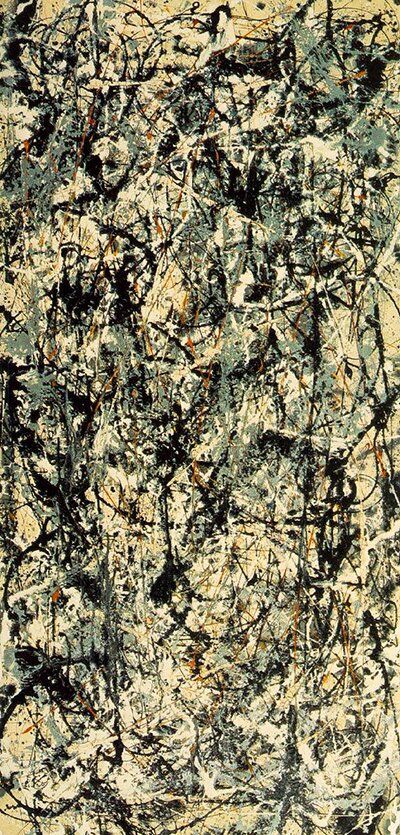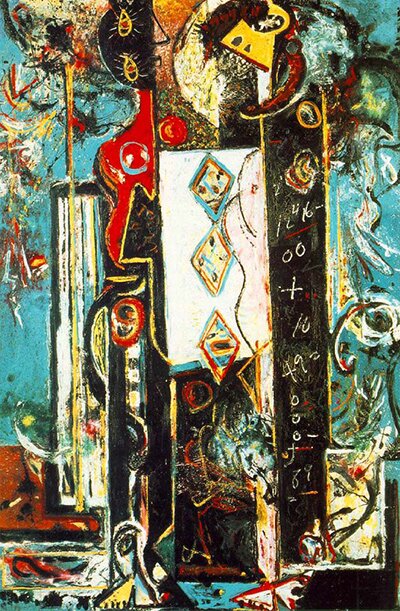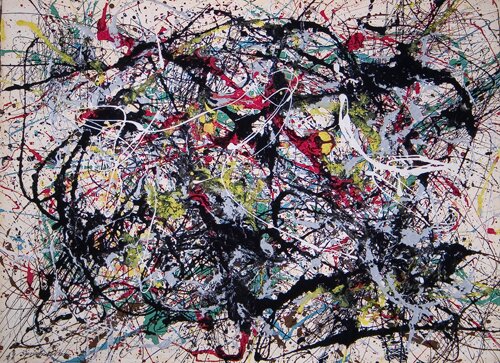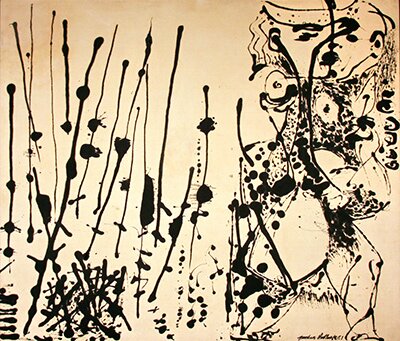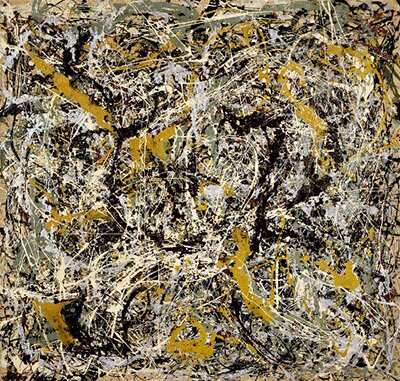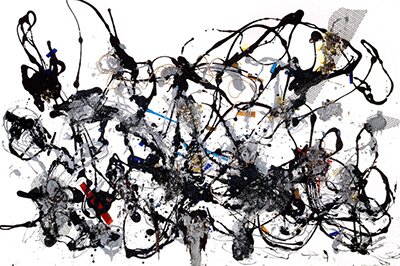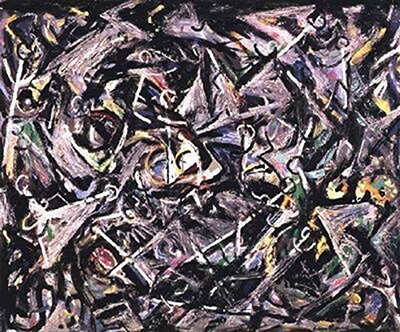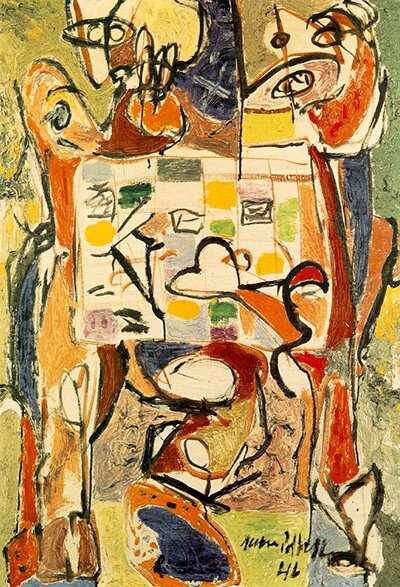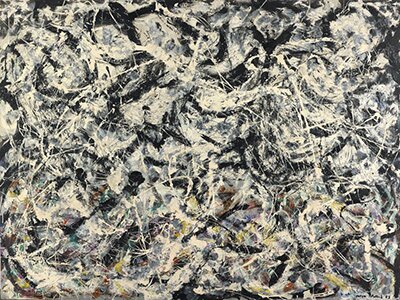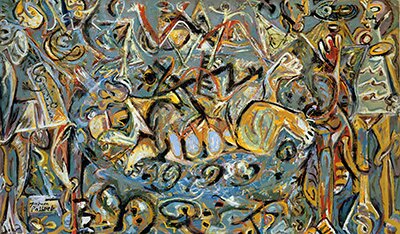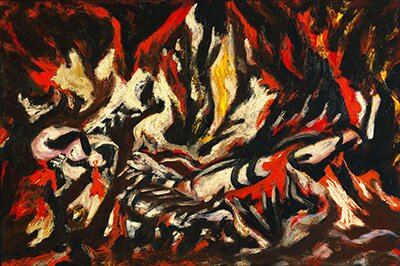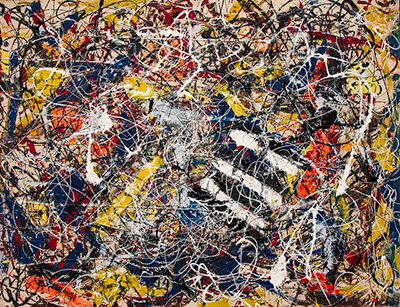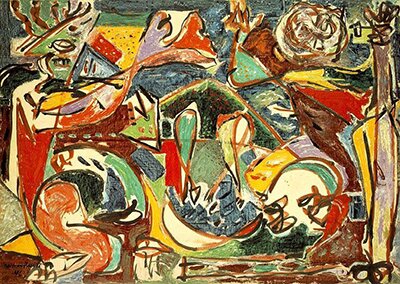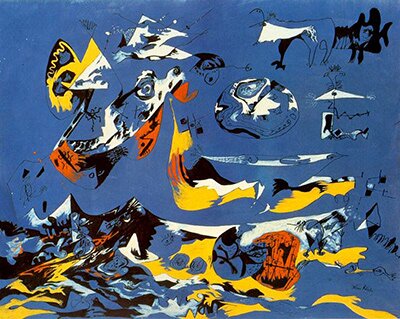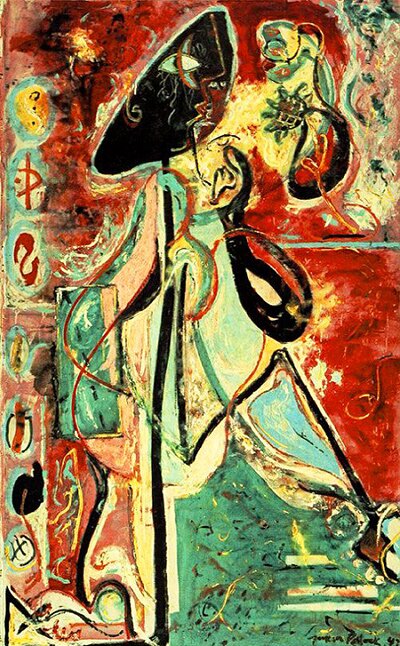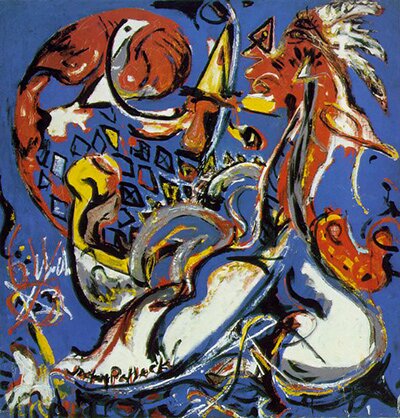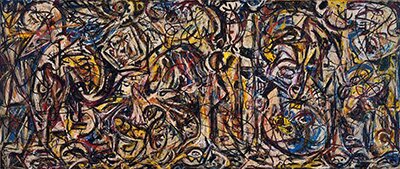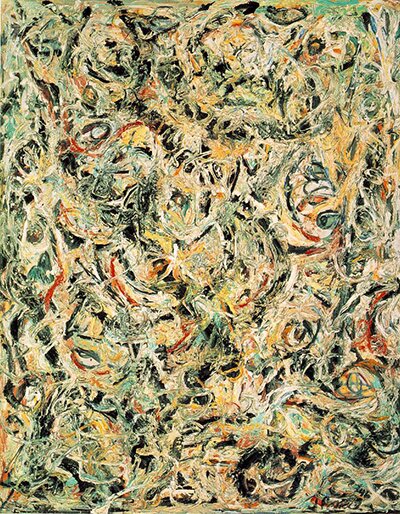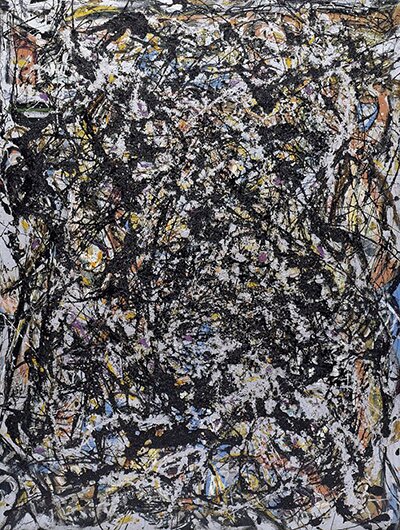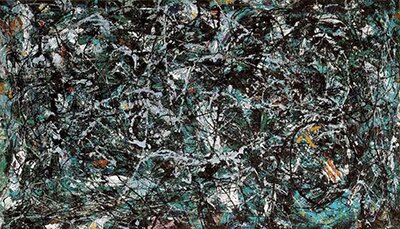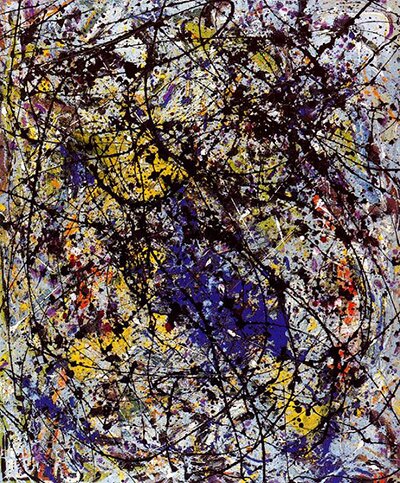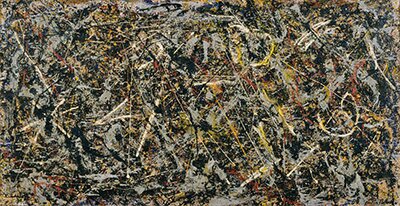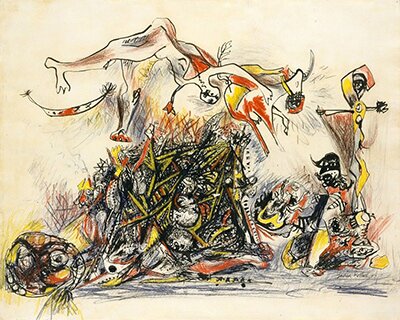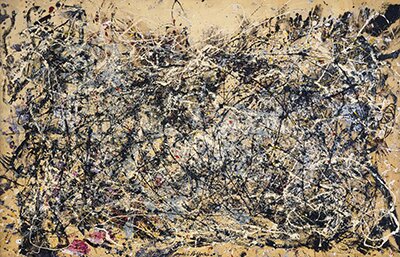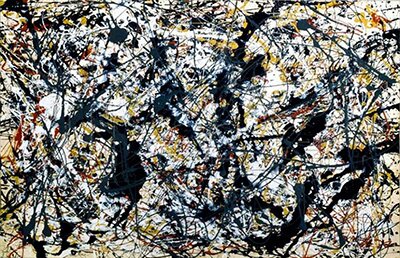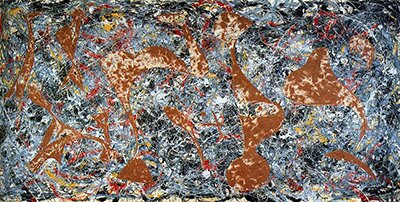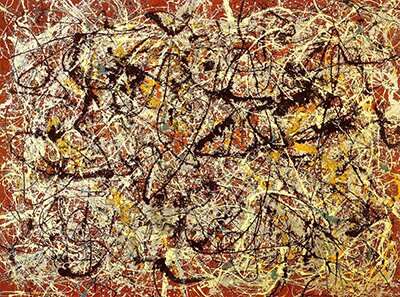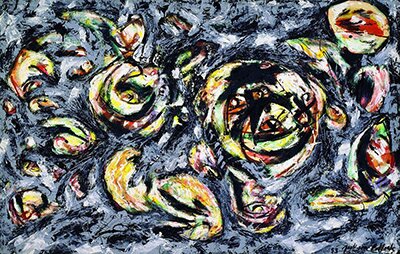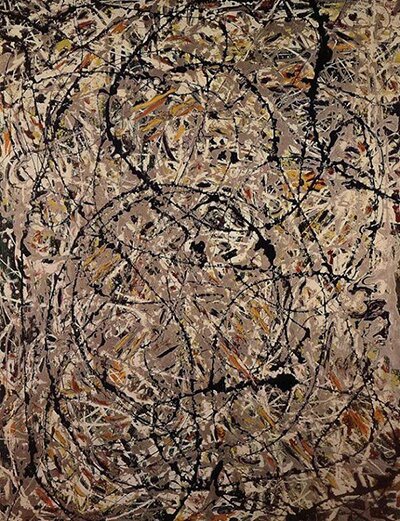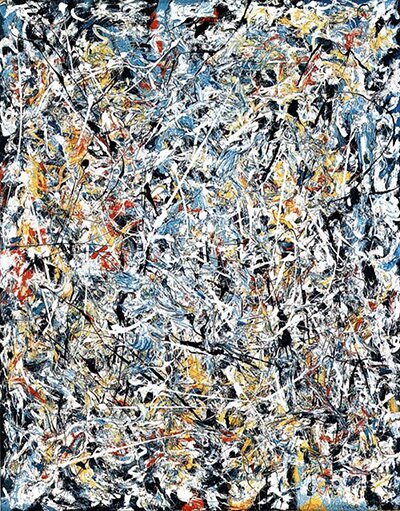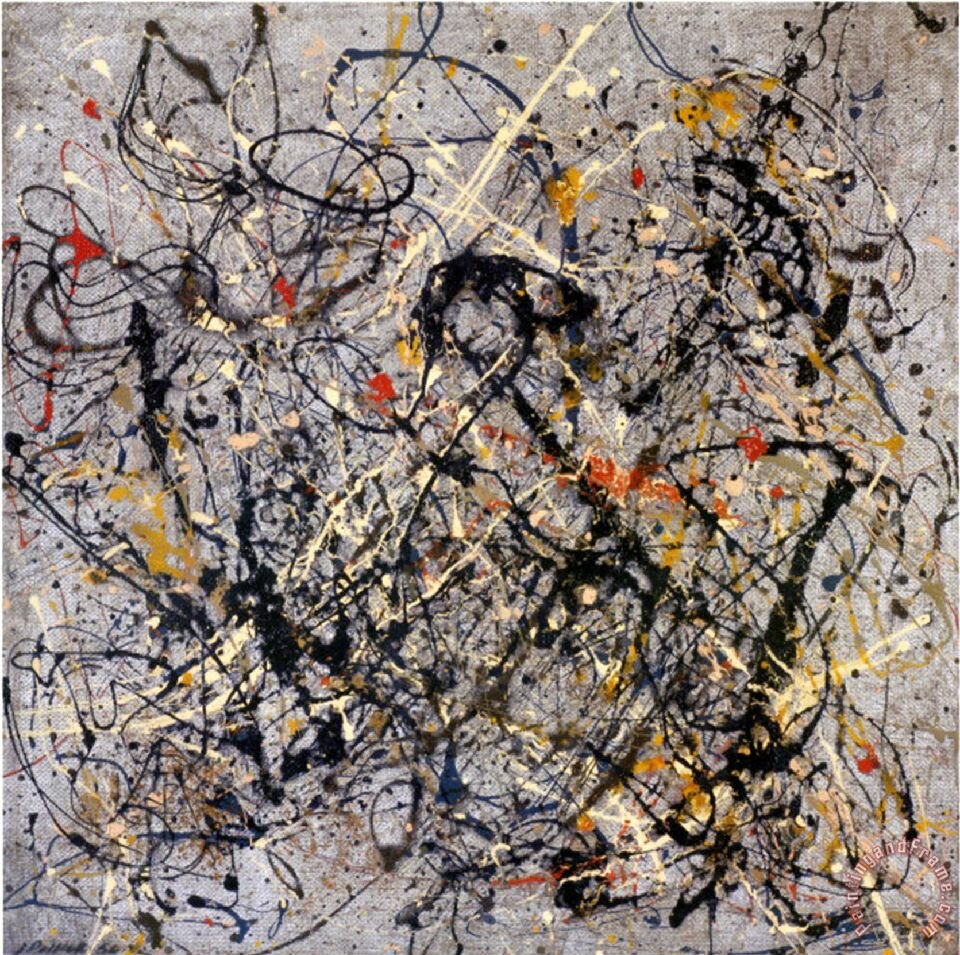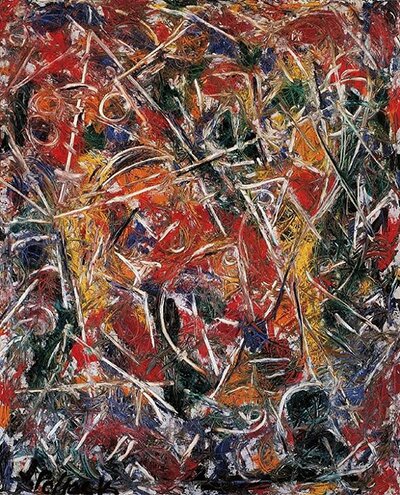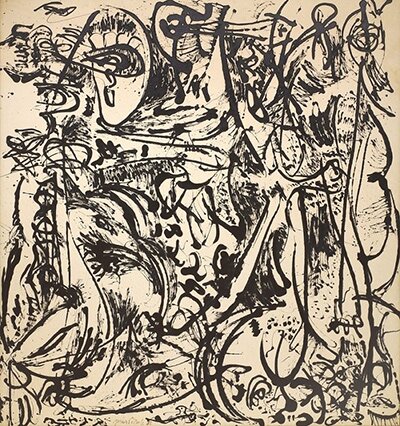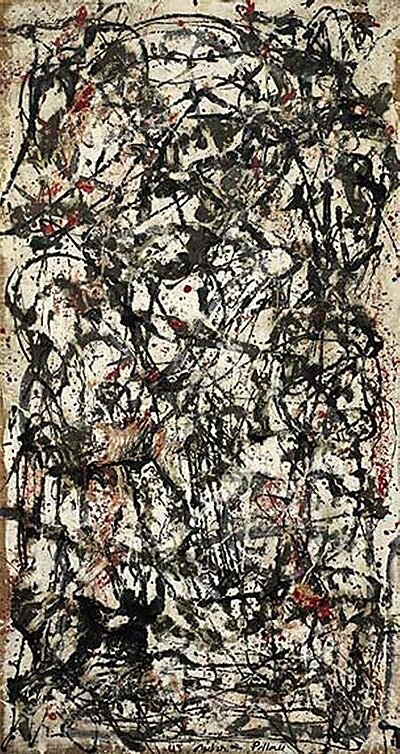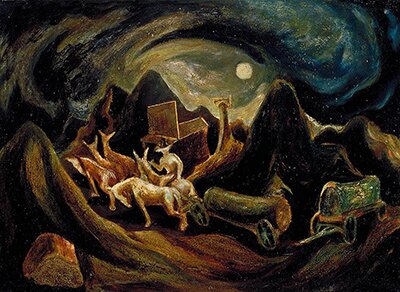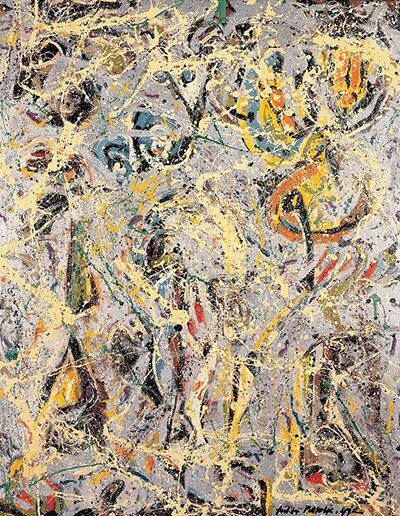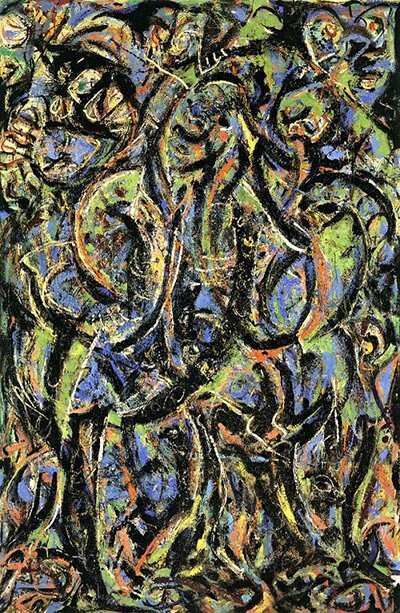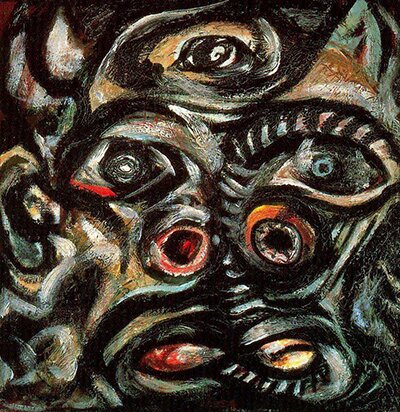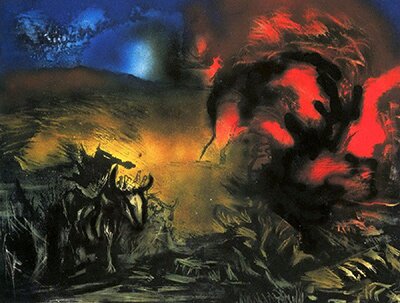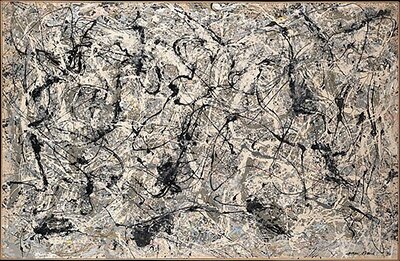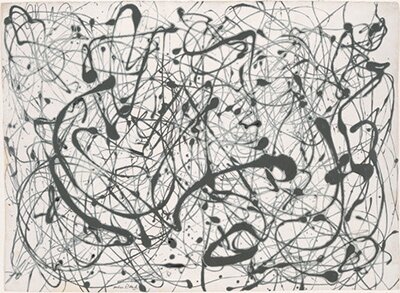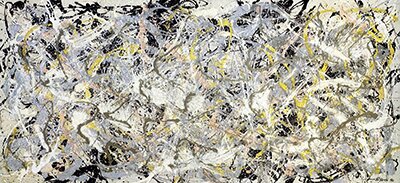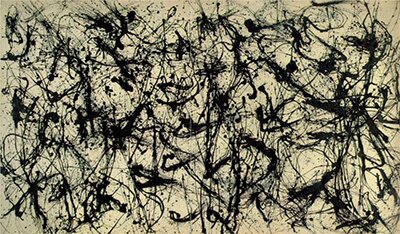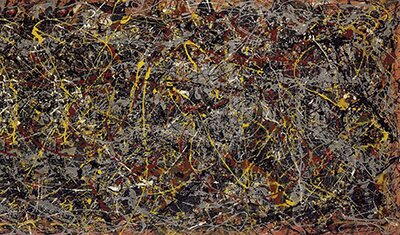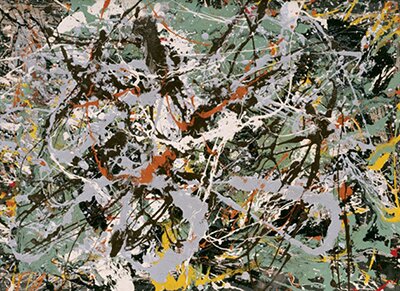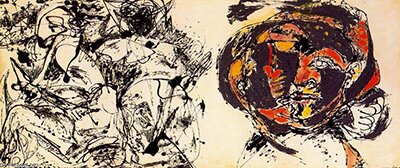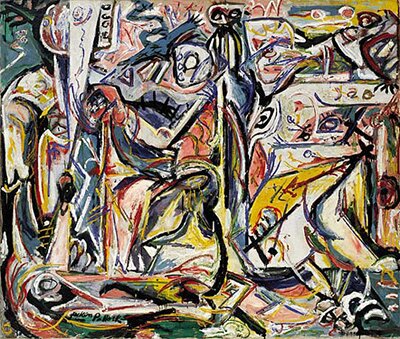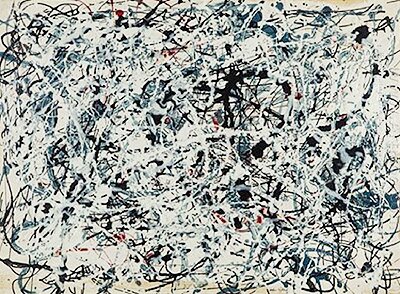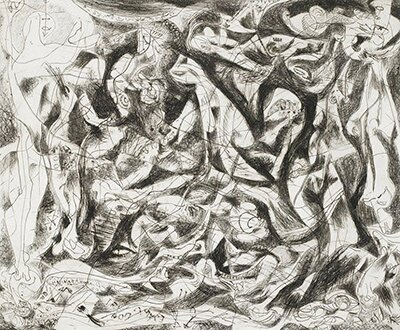Convergence is shown here to the left and this is the most popular of all paintings from Pollock's career. You will notice that it is clearly from his drip period, where canvases were placed on the floor and different drip techniques were used to fill them with colour. Pollock's style of work changed over time as his interests moved more and more into abstraction. The artist played an important role in gaining support for abstract expressionism and other related movements through his connections in the modern art world. You will find paintings from this artist in many modern media publications such as music album covers and also merchandise. Convergence is recognised by even the occassional art fan, although not all will know quite who produced it.
Besides Covergence, other paintings worth checking out are listed from our sub menu of this section, featuring Mural, Lucifer, Blue Poles and The Deep too. Below is a list of some of the highlights from Pollock's career. Despite being cut short, the artist was prolific and influential during his time in the limelight. There are thankfully plenty of paintings to appreciate from the different stages of his development. Jackson Pollock's paintings feature within the key elements that make up the highlights of 20th century art and his style is considered fairly unique, even within the variety of exciting new ideas which cropped up during this highly creative period. Abstract art dominated much of the century, but the techniques used for it varied wildly, with Pollock's own methods being impossible to reproduce in precisely the same way each time, making every artwork specific to that moment in time.
Whilst having a fairly strong character who would not take kindly to criticism, Pollock would take on different influences during his career which helped him to develop over time. For example, he worked in a realist manner during the 1930s and this allowed him to both learn the techniques of the great masters but also to become familiar and accomplished in working on large canvases. It was his knowledge of other Surrealist artists that first attracted him to the idea of connecting one's mind to the art world, and not simply delivered aesthetic pleasure from whatever one encountered in the real world. The Surrealists were also particularly prominent in the first half of the 20th century and so their ideas could not be avoided, even if Pollock was actually based in the US, whilst they were playing a key role within and . Some of the examples to look out for within this group of artists would be paintings by , and .
There was also the rise of Cubism which gave a new way of thinking about space and perspective. One could essentially consider the same item from different angles within the same painting and this flew in the face of traditional art. Some of the stars of that movement were and , as well as who himself would then move onto a number of other styles in his later years. Whilst Pollock was not a surrealist nor a cubist, he could take ideas from these new approaches and use them to help free his own mind from what had gone before in previous centuries and set about creating his own unique approach that would allow this unhappy, bullish character to turn his own internal pain into stunning artworks that would excite and shock the art world. He was later described as the greatest painter in the United States just as he started to peak later in his career.
Pollock's drip painting technique would become his signature style and this was something quite groundbreaking, in a number of different ways. An artist was now able to attack a canvas from different angles, freeing them up work from feeling and even be fairly active whilst producing art. There was a real connection between art and the creator when working this way, getting to grips with different materials in a similar way to how the great sculptors such as , and would enjoy the tactile nature of that alternative medium. It was this process which led to other names for this style being used, such as Action or All-Over Painting. Pollock himself would actually use fairly normal, everyday paints for this process, probably not realising at the time just how famous and successful some of these pieces would later become. There was a certain pent up frustration, even anger within this artist which perhaps could be quelled by working in this way, much as others would use exercise to control their mental anxieties and stress.
Full List of Jackson Pollock Paintings
Listed below are some of the art prints and paintings for sale at Art.com.
- Mural
- Blue (Moby Dick)
- Troubled Queen
- Eyes in the Heat
- The Key
- Enchanted Forest
- Lucifer
- Number 5
- Number 8
- Composition (White, Black, Blue and Red on White)
- Summertime: Number 9A
- Number 1
- Number 3
- Number 10
- Number 1, 1950 (Lavender Mist)
- Mural on indian red ground, 1950
- Autumn Rhythm (Number 30), 1950
- Number 29, 1950
- Convergence
- Blue Poles
- The Deep
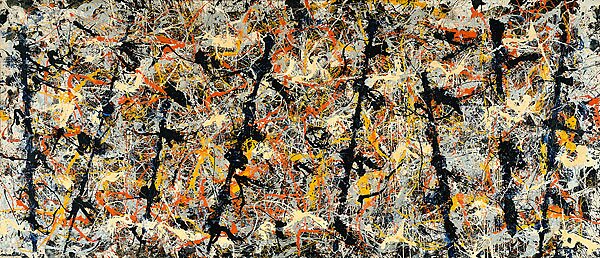
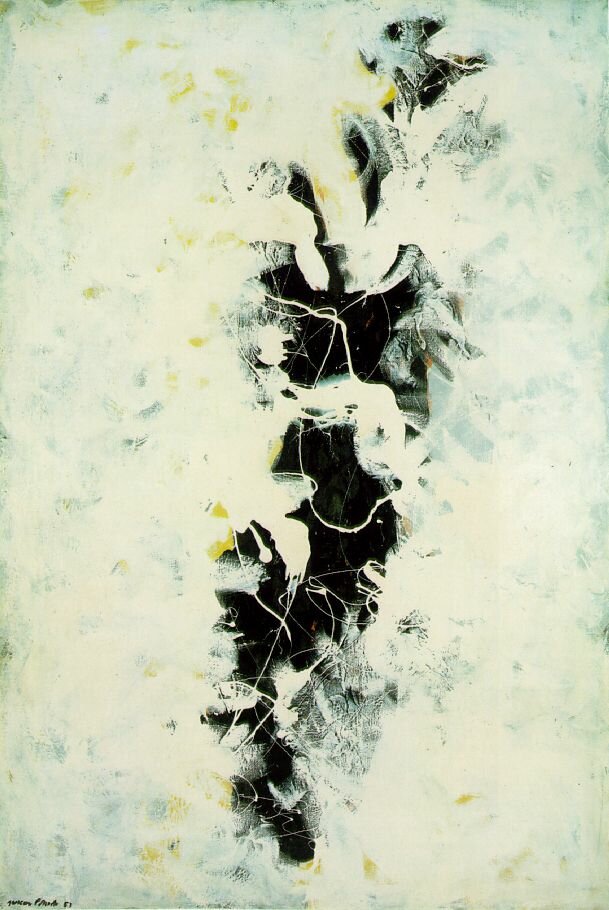
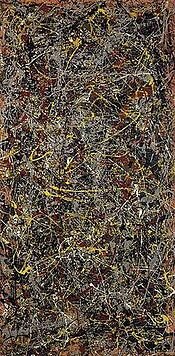
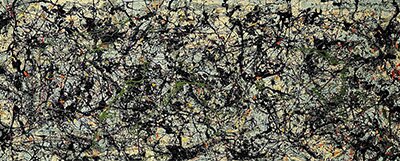

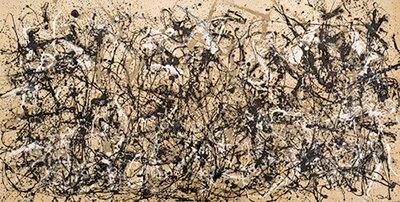
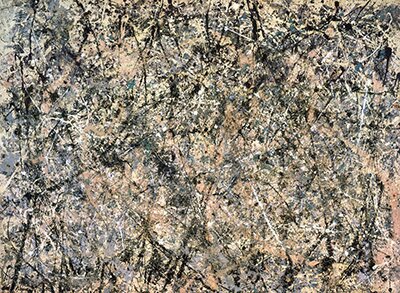

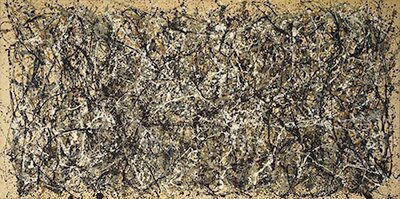
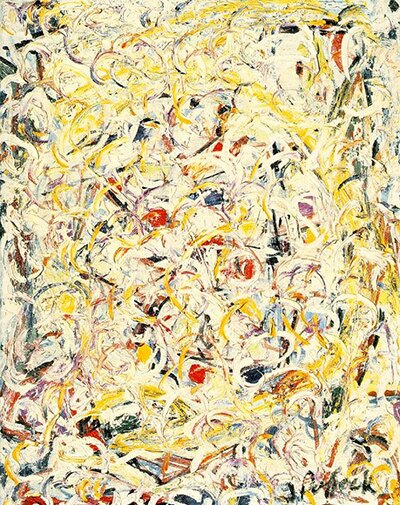

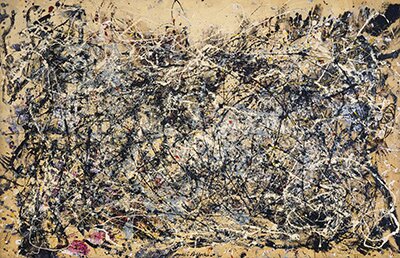
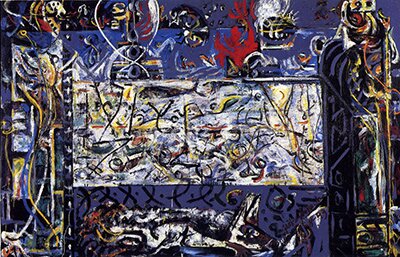
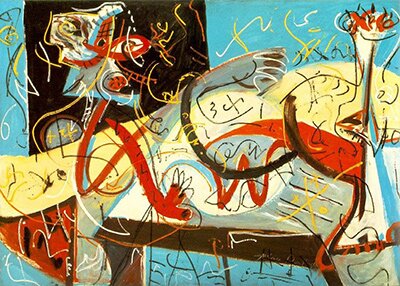
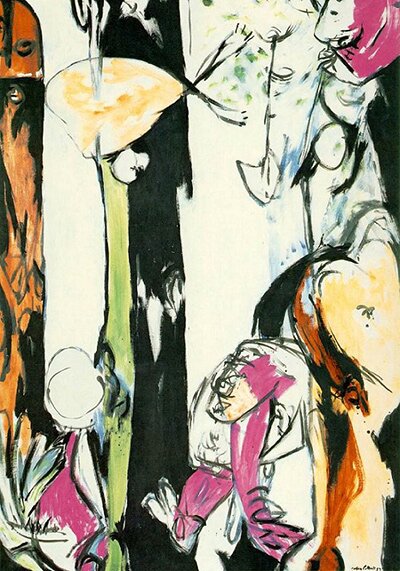
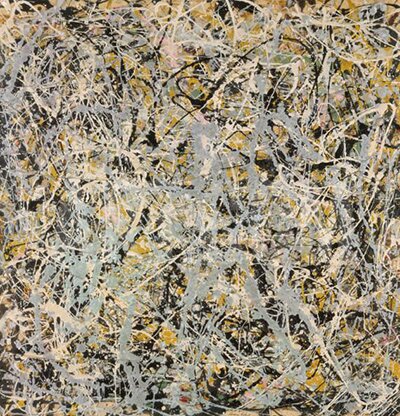

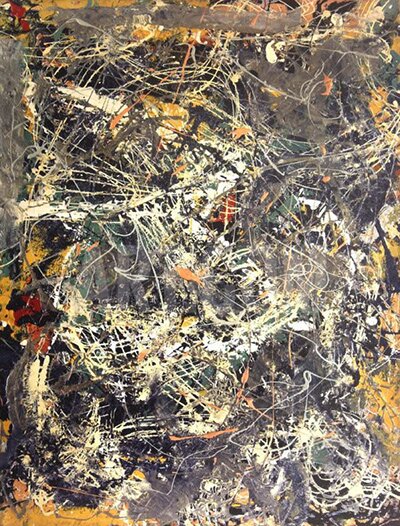
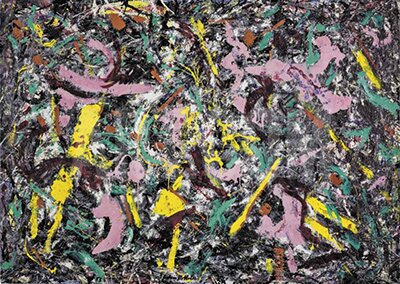
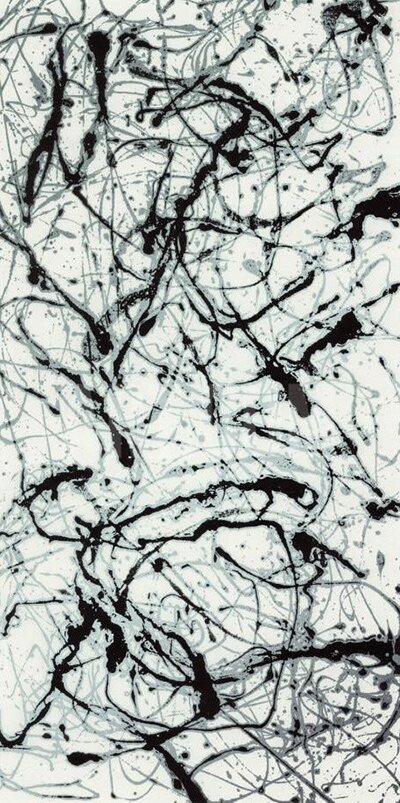
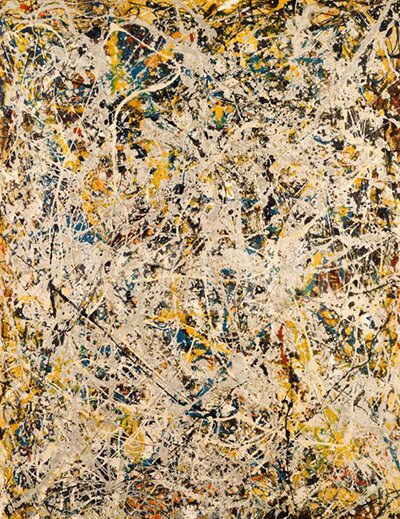
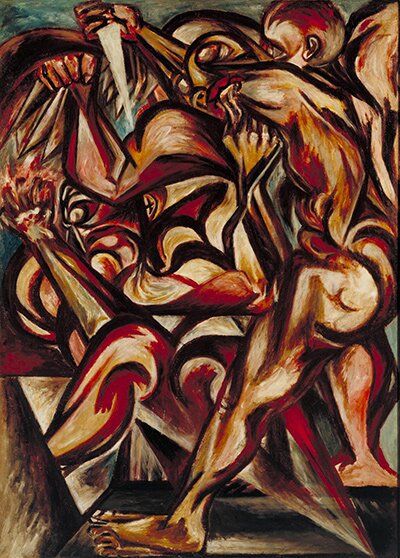

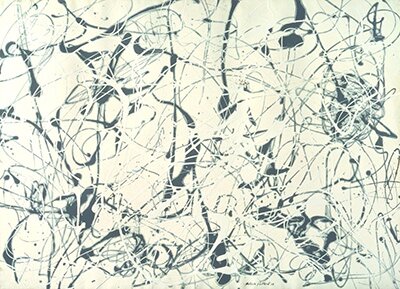


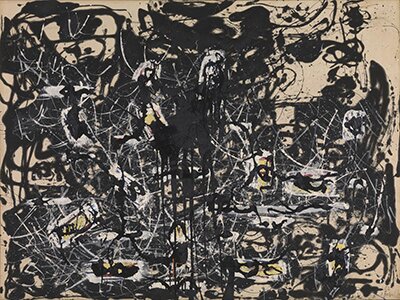
%20Jackson%20Pollock.jpg)
